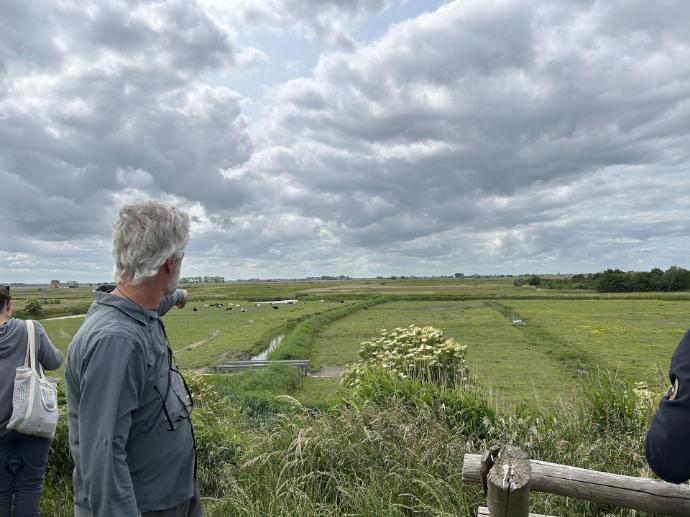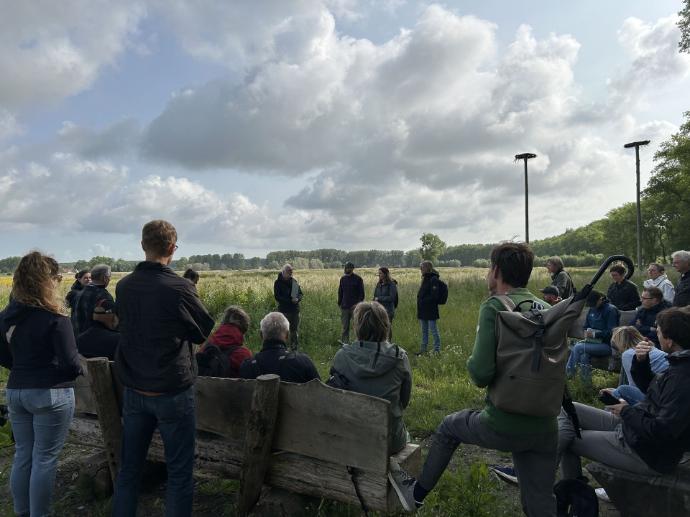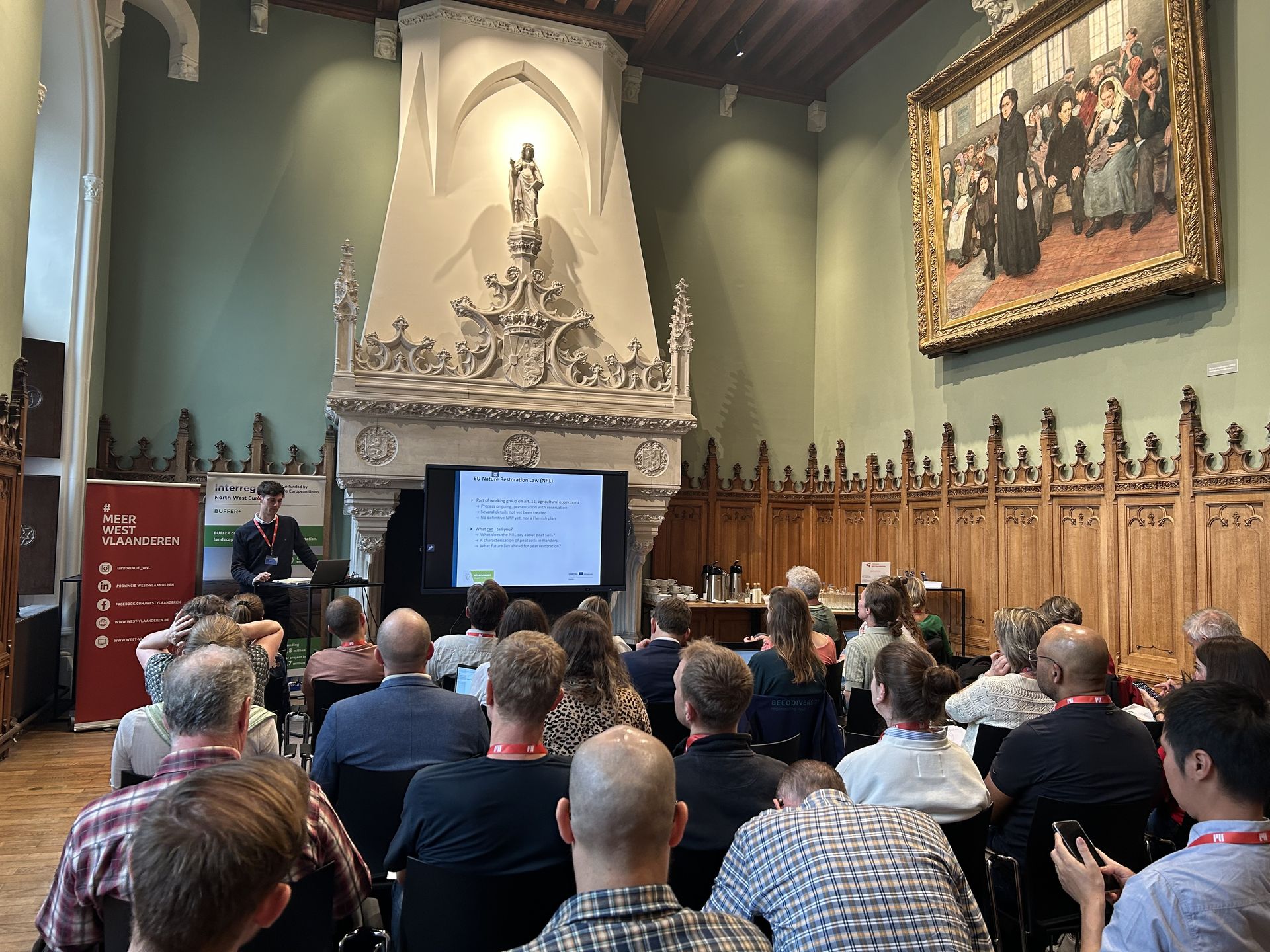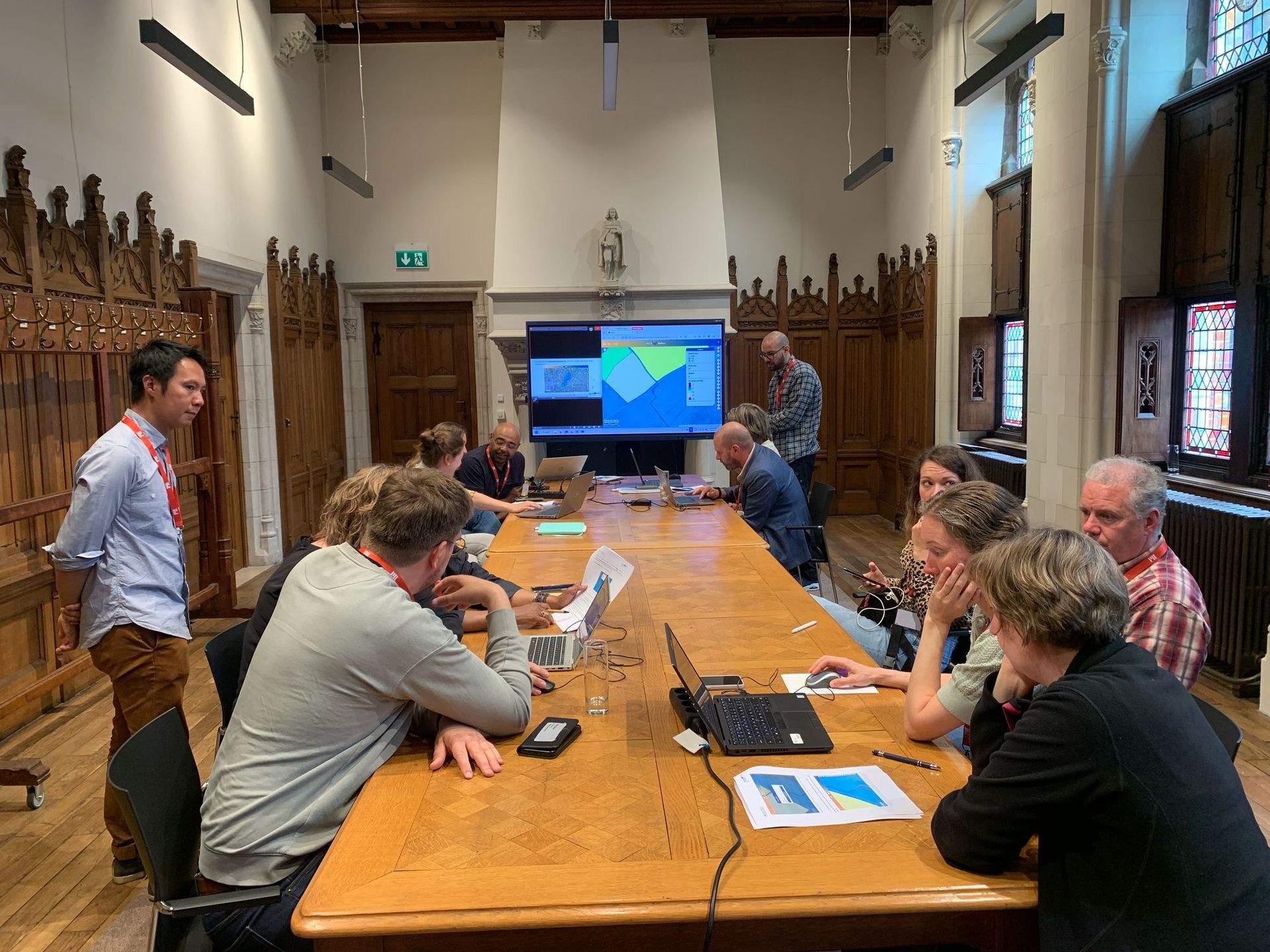BUFFER+ partner meeting in Bruges: peat restoration, water management and policy innovation
The fourth BUFFER+ partner meeting, held from June 3 to 5, 2025, brought partners together in Bruges and the surrounding West Flanders region. The meeting focused on innovative approaches to water management, peatland restoration and integrating biodiversity and farming through policy and practice.
Water challenges and peatland strategies in West Flanders
On the first day, partners visited four pilot sites that reflect the diversity and complexity of landscape management in the region. These sites illustrated how BUFFER+ strategies are being tested to address challenges such as peat oxidation, seasonal water scarcity, biodiversity loss, and sustainable land use.
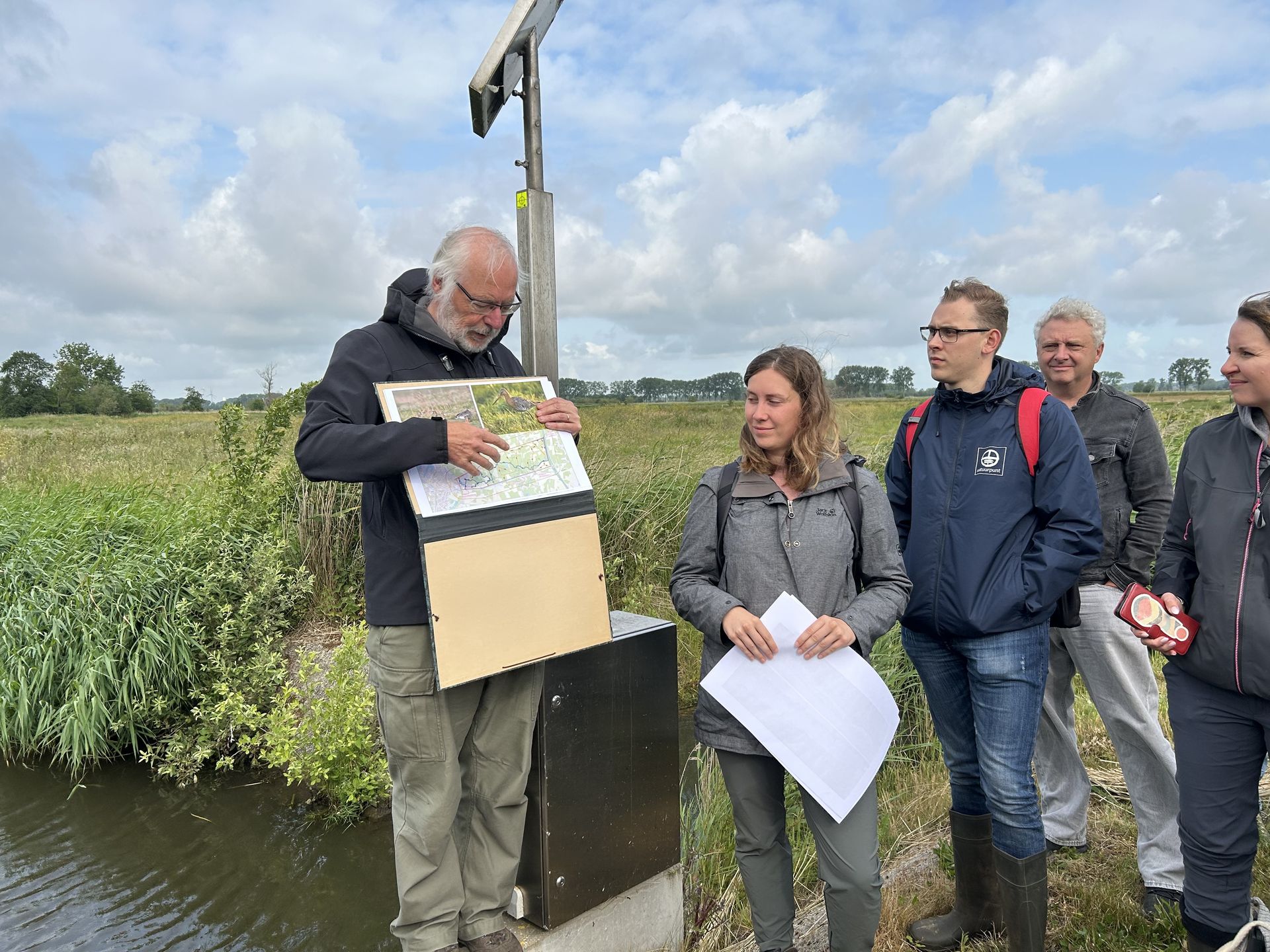
At Romboutswervepolder, a site facing increasing pressure from groundwater fluctuations and peat degradation, Provincie West-Vlaanderen is piloting the use of strategically placed weirs. These structures aim to raise groundwater levels above the peat layers, helping reduce oxidation and slow down CO₂ emissions. A local water monitoring network supports ongoing research into the site’s complex hydrology.
The group then visited Uitkerkse Polder, a vital nature development area below sea level. Historical peat and clay extraction left a unique microrelief, now being managed by the Vlaamse Landmaatschappij through efforts to raise and stabilize water levels by 40–80 cm. The site is also exploring how farmers can continue to manage grasslands under these wetter conditions while achieving biodiversity goals.
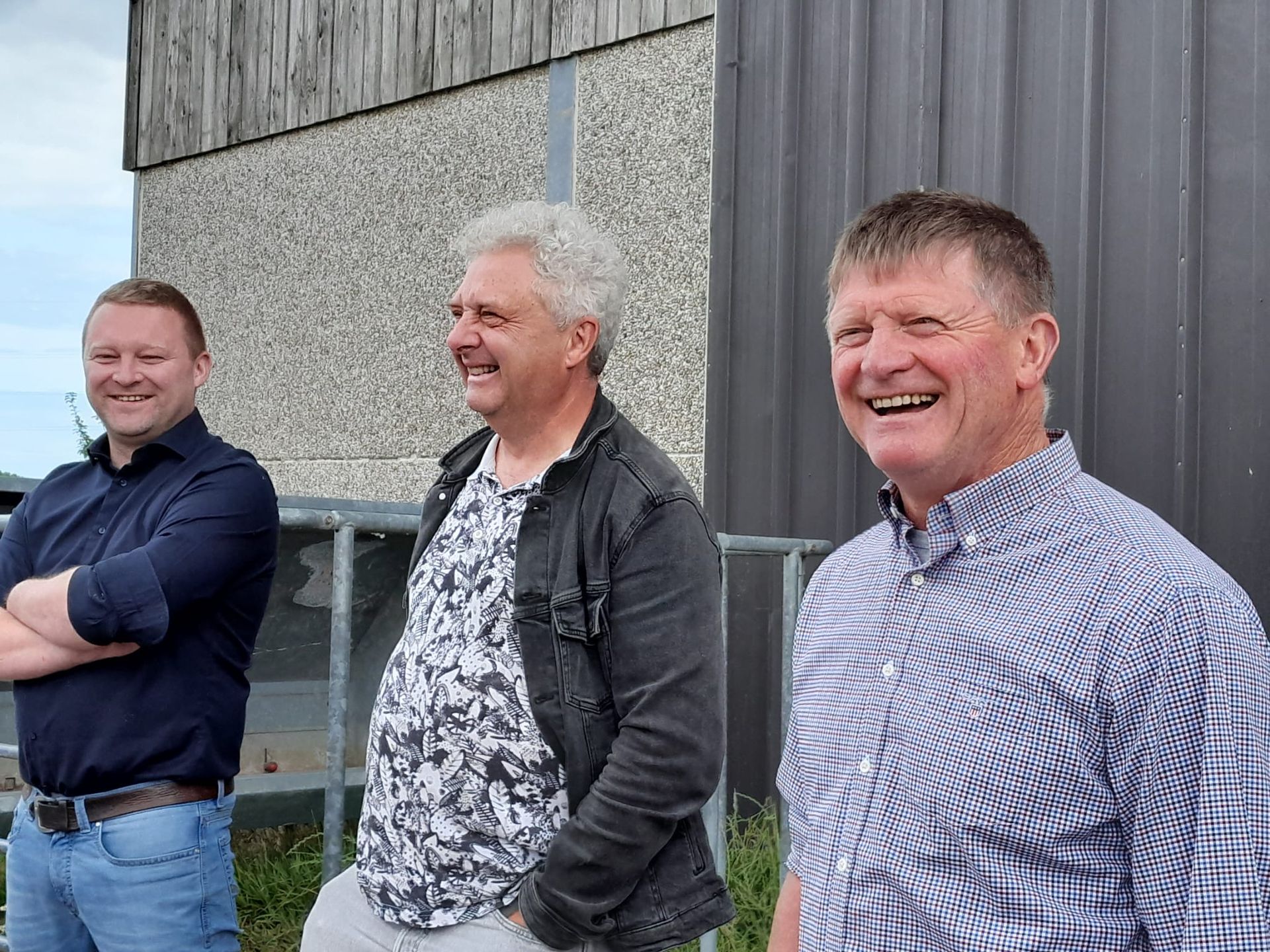
At Meetkerkse Moeren, a polder area shaped by centuries of human intervention, a local farmer shared insights into managing water levels amidst climate change and shifting precipitation patterns. Originally restored for nature in 2005, the site now faces new pressures, making farmer involvement and adaptive strategies crucial.
Finally, the group visited Kwetshage, a newly created swamp and nature compensation site developed alongside the Zeebrugge Port expansion. Equipped with windmills for water level control, Kwetshage is designed to support biodiversity while acting as a water buffer. It serves as an example of how smart ecological engineering can provide multi-functional landscapes.
Presentations and interactive sessions in Bruges
On the second day, partners gathered at the Provinciaal Hof in Bruges for a full day of presentations, workshops, and networking—diving deeper into the policies and technologies shaping peatland restoration and sustainable land use.
The day opened with a keynote from the Vlaamse Landmaatschappij, introducing the EU Nature Restoration Act adopted in 2024. This sparked discussion around implementation in various partner countries and the role of BUFFER+ in aligning local practices with broader European goals.
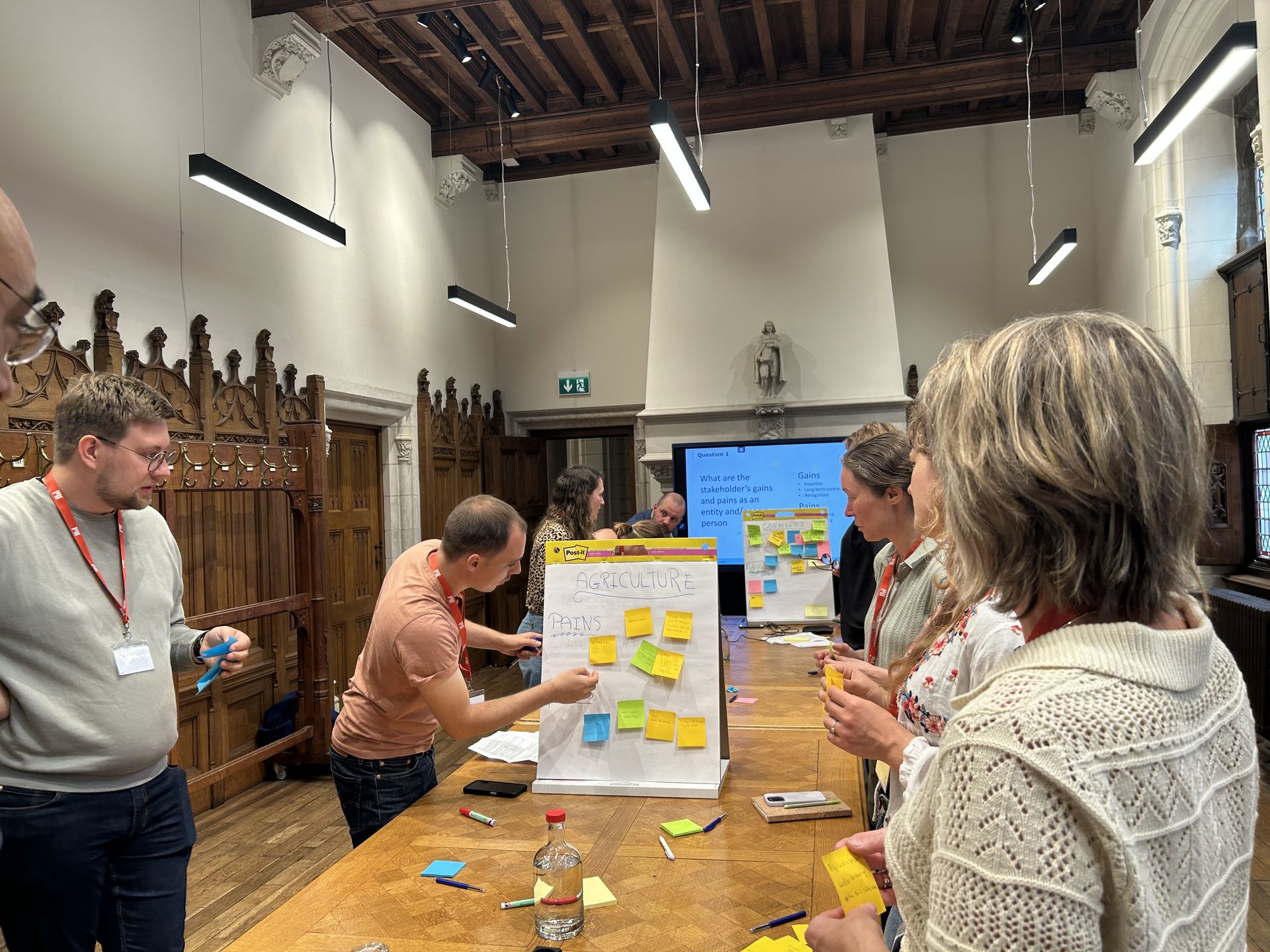
BEEODIVERSITY and AC3A led a World Café session using the Beeodiversity Model Canva, allowing partners to explore biodiversity strategies that create both ecological and economic value. The session laid the foundation for new peatland business models tailored to local contexts.
Digital innovation was also on display as HAEDES presented its latest version of the digital twin for peatland restoration. Using Romboutswervepolder as a case study, the tool demonstrated how virtual simulations can guide decisions on hydrology and restoration scenarios.
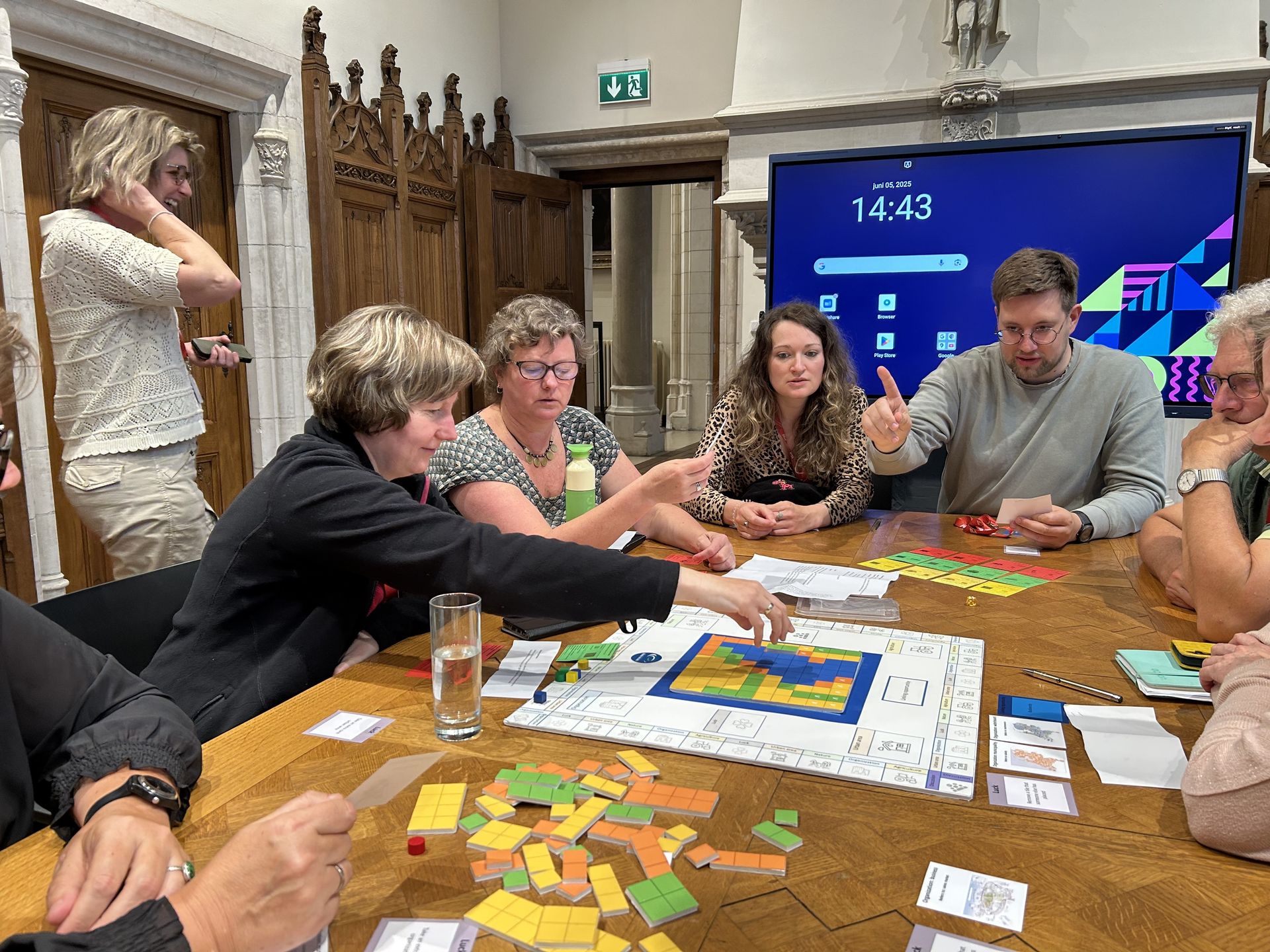
In the afternoon, Waterschap Hunze en Aa’s introduced its serious board game “Water and Soil as Guiding Principles.” Partners played the game in small groups, using real-life-inspired scenarios to spark discussions about the complexities of land and water management planning.
Collaboration for a climate-resilient future
Throughout the three days, the Bruges meeting highlighted the importance of cross-sector collaboration and place-based solutions. From field visits to policy discussions and interactive tools, partners exchanged valuable insights that will help shape BUFFER+ strategies going forward.
Stay tuned for more updates and insights from the BUFFER+ project as we continue working together to protect peatlands, enhance biodiversity, and ensure sustainable land and water use across Europe.
